![Eastman, Julius: The N*gger Series (Box Version) [VINYL 2 LPs] (Blume) Eastman, Julius: The N*gger Series (Box Version) [VINYL 2 LPs] (Blume)](https://www.teuthida.com/productImages/misc4/33249.jpg)
Reissuing Blume record's 2018 double album of New York avant composer Julius Eastman's "N****r Series" "Evil N****r" (1979) "Gay Guerilla" (1980) and "Crazy N****r", now in a deluxe wooden box set edition with a 12-page booklet with the original liner notes by Mary Jane Leach and Bradford Bailey, a new 2500 word essay by Bailey, as well as unseen pictures and a poster.
Out of Stock
Quantity in Basket: None
Log In to use our Wish List
Shipping Weight: 60.00 units
Sample The Album:
Julius Eastman-composer, piano
Frank Ferko-piano
Janet Kattas-piano
Patricia Martin-piano
Click an artist name above to see in-stock items for that artist.
Double-LP on violet vinyl, audiophile pressing, housed in Nagaoka anti-static record sleeves.
UPC: 769791984035
Label: Blume
Catalog ID: BLUME 014-15BOX
Squidco Product Code: 33249
Format: 2 LPs
Condition: New
Released: 2023
Country: Italy
Packaging: HANDMADE WOODEN BOX w/ BOOKLET & POSTER
Recorded live at Northwestern University, in Evanston, Illinois, on January 16th, 1980. Mastered by Giuseppe Ielasi.
"After remaining out of print and hotly pursued for five years, Blume Editions returns with a brand-new edition of their 2018 release of Julius Eastman's The N****r Series. Comprising three of his most politically and creatively radical works -- "Evil N****r" (1979) "Gay Guerilla" (1980) and "Crazy N****r" (1980) -- each a shimmering and complex work of post-minimalist piano, this brand new deluxe edition is housed in a beautiful, handmade wooden box, which contains two vinyl LPs, a 12-page booklet with the original liner notes by Mary Jane Leach and Bradford Bailey, a brand new 2500-word essay by Bailey, as well as new unseen pictures courtesy of Roberto Laneri, and a poster. Over the last decade and a half, it's been incredible to witness the ascending star of the composer Julius Eastman. A celebrated figure within the New York experimental music scene during the 1970s and '80s, over the years following his untimely death in 1990 he and his work drifted into sinful neglect.Largely thanks to a series of archival releases attending to his work, and a handful of new renderings by Apartment House, Wild Up, So Percussion, Kukuruz Quartet, and number of ensembles, attention has finally come his way, placing him at the center of the consciousness of a new generation of listeners. During his tragically brief life, Julius Eastman burned like a wild fire. A brilliant composer, pianist, and vocalist who, with contemporaries like Arthur Russell, Arnold Dreyblatt, Ellen Fullman, Rhys Chatham, Glenn Branca, and numerous others, pioneered the development of post-minimal music, he was among only a handful African American artists at the center of New York's experimental music scene during the 1970s and '80s. Contentious, confrontational, and brash, he was also among the first artists to draw the subjects of ethnicity and queer identity into the conceptual sphere of that scene; interventions that rarely went down well within a context that was dominantly middle-class,heteronormative, and white. Sadly, this led to attacks upon him by prominent composers like John Cage, a factor that contributed to the long-lasting degradation of his legacy that has only just begun to be repaired. While none of the works within The N****r Series explicitly state they must be executed on piano -- being composed by Eastman "for any number of similar instruments" -- since their debut by the composer on piano in 1980, they have almost always featured the same instrumentation. The recordings featured within are the earliest known -- dating from around 1980 -- and are the only to have been realized during the composer's lifetime. Collectively, these three works -- unquestionably among the most politically and creatively radical in Eastman's entire body of work -- generate sprawling soundscapes through adamantly restated patterns and interlocking canons, not fragmenting, but preaching urgent truths. Double-LP on violet vinyl, audiophile pressing, housed in Nagaokaanti-static record sleeves."-Blume
Double-LP on violet vinyl, audiophile pressing, housed in Nagaoka anti-static record sleeves.
Artist Biographies
• Show Bio for Julius Eastman "Julius Eastman was born on October 27, 1940 (to May 28, 1990). He was an accomplished composer, pianist, vocalist, and dancer of minimalist tendencies. Julius Eastman grew up in Ithaca, New York, where he worked in his teen years as a paid chorister. He gained plenty of regional attention with his wonderful voice, and began his piano studies at age 14. After only six months of practice, he was playing Beethoven and other challenging classical composers. Eastman attended Ithaca College and transferred to the Curtis Institute of Music, where he studied piano with Mieczyslaw Horszowski and composition with Constant Vauclain. After a few months, Eastman switched his major from piano to composition. Eastman made his debut as a pianist in 1966 at Town Hall in New York City. He possessed a rich baritone voice that caught the attention of the symphonic world when he recorded the 1973 Grammy-nominated Nonesuch recording of British composer Peter Maxwell Davies' "Eight Songs for a Mad King." Eastman's talents as a composer impressed the celebrated composer and conductor, Lukas Foss. In 1970, Eastman joined the Center for the Creative and Performing Arts at the State University of New York at Buffalo, where he met the Czech-born composer, conductor, and flutist Petr Kotik. Eastman and Kotik performed together extensively in the early to mid-1970s, and he became a founding member of the S.E.M. Ensemble, with whom he performed, toured, and composed numerous works. Many of the earliest performances of Eastman's works were given by the Creative Associates Ensemble of University at Buffalo, of which he was also a member beginning in 1968. He taught theory while at the University at Buffalo, but left over what he described as "creative differences." Eastman had hoped to transition to a similar position at Cornell University, in his hometown of Ithaca, but they quickly backed away, and it failed to materialize. Eastman eventually moved to New York City, where he was associated with the Brooklyn Philharmonic, then led by his friend Lukas Foss. Eastman became a pioneering figure in minimalism, and an influential member of the 1980s Downtown New York scene. He performed in jazz groups with his brother, Gerry Eastman, a guitarist and bass player in many jazz ensembles, including the Count Basie Orchestra. Ironically, the only work by Julius Eastman registered with the U.S. Copyright Office is as a lyricist, with his brother Gerry listed as the composer. Julius Eastman was a composer of works that were minimal in form but maximal in effect. His compositions were often written according to what he considered an "organic" principle, by which each new section of a work contained all the information from previous sections, though sometimes "the information is taken out at a gradual and logical rate." The principle is most evident in his three works for four pianos, "Evil Nigger," "Crazy Nigger," and "Gay Guerrilla," all from around 1979. The last of these, an expansive and emotional work, appropriates Martin Luther's hymn "A Mighty Fortress Is Our God" as a gay manifesto. Eastman's "Stay On It" from 1973 was an influential post-minimalist piece that incorporated pop music influences. He frequently performed with the Experimental Intermedia Foundation, and participated in music symposia with Morton Feldman and John Cage. A 1980 selection for Eastman's voice and cello ensemble, "The Holy Presence of Jeanne d'Arc," was performed at The Kitchen in New York City, and he lent his vocal strength to Meredith Monk's ensemble for her influential album, "Dolmen Music," in 1981. In 1986, choreographer Molissa Fenley used his work "Thruway" for a dance called "Geologic Moments" at the Brooklyn Academy of Music. Julius Eastman was a man seemingly balanced between irreconcilable extremes. He was brilliant, but suffered from extreme bouts of schizophrenia; he was celebrated as a star in the avant-garde world of classical music, but was occasionally homeless and sleeping in Manhattan's Tompkins Square Park. But perhaps the greatest difference was addressed by one of Eastman's colleagues who stated simply, he was "a Black, gay man rattling around loudly in the white, constrained world of classical music. Eastman was a living testament to unbounded American opportunity and woeful American inequality." Eastman's mercurial artistry often reflected those conflicting paradigms in his world. His compositions exposed a confrontation that he saw between Western and African music, and conflicting notions of beauty. Eastman's music could comfort one moment and agitate the next. But in the end, he may have been a man who despite his immense intellect and talent, thrashed himself apart trying to live too many contradictions. Eastman also battled alcoholism and drug addiction. He could be immensely charming, but also an acrid, seething, and occasionally impossible man. Sometimes when he spoke, it was difficult to detect if he was being hurtful or humorous. His temperament can even be detected in the titles he assigned his compositions: "If You're So Smart, Why Aren't You Rich," "Evil Nigger," and "Gay Guerrilla." The language was so acidic, it ate away at the concert hall universe, and was perhaps a fitting gesture for someone who saw as much rank hypocrisy as opportunity within its walls. Despondent about what he saw as a dearth of professional possibilities worthy of him, Eastman grew increasingly dependent on alcohol and other drugs after 1983, and his life began to fall apart. At one point, he was evicted from his apartment, his belongings (including most of his music scores) abandoned curbside. Despite an unsuccessful attempt at a comeback, he shuffled between friends' homes in New York City and Buffalo, and slipped into obscurity. Julius Eastman and I had a mutual friend, upon whose doorstep Eastman would occasionally appear. He would stay for a while, and then vanish under the premise of a new musical collaboration or project that required his presence. His friend, John Crawford, had a spacious apartment in a very elegant rowhouse in downtown Buffalo. He also had a stunning, burled rosewood Steinway Grand in his parlor, that Eastman reportedly never touched. It appears his disconnection from his musical past was becoming complete. At his final visit to Buffalo, Julius Eastman was very, very ill. I spoke to him briefly, but was disturbed to see him in such deep crisis. He suffered from insomnia, was emotionally distressed, and, as I recall, very paranoid-certain that the music world was out to destroy him. But the more pressing issue was his rapidly failing health from the effects of AIDS. Within days, Eastman would be rushed to Buffalo's Millard Fillmore Hospital, where he died three days later, on May 28, 1990, from AIDS-related, cardiac arrest. Julius Eastman had descended so far from the public eye that no notice was given to his death until an obituary by Kyle Gann appeared in the "Village Voice" on January 22, 1991, eight months after he died. Eastman's notational methods were loose and open to interpretation, and consequently, any revival of his music has been a difficult task, dependent on the generous efforts of people who worked with him. Many of his compositions and recordings were discarded when he was evicted. But there are some amazing musicians, who are working tirelessly to collect, preserve, and perform his compositions, and keep his unique musical presence available for generations to come. Eastman's music continues to be heard around the world. In December of 2016, the world's first Eastman retrospective took place at the London Contemporary Music Festival, and included a presentation of seven Eastman works and an exhibition, spread over three nights. The following May, "That Which Is Fundamental," a four-concert retrospective and month-long exhibition of Eastman's work was hosted at Bowerbird in Philadelphia, produced in collaboration with the Eastman Estate. We remember Julius Eastman, and thank him for his unique artistry, and his contributions to our cultural landscape and community." ^ Hide Bio for Julius Eastman • Show Bio for Frank Ferko "The music of Frank Ferko has been heard in live performances and radio broadcasts around the world. Hailed by critics as a master of text setting and composing for a cappella vocal ensembles, Mr. Ferko is one of the most sought after composers of new choral music today, and his works have been performed by some of the most highly regarded choral ensembles and vocal soloists of our time. Mr. Ferko's works have been performed all over the world by such by distinguished ensembles as Nederlands Kamerkoor, VU-Kamerkoor, Oost-Nederlands Kamerkoor (The Netherlands), Jubilate Singers (New Zealand), Commotio, BBC Singers, Trinity College Choir, Cambridge, ORA Singers, Holst Singers, Londinium, (United Kingdom), Trinity College Choir, Melbourne, Harvard Glee Club, Volti (San Francisco), Cantori New York, Cerddorion, Conspirare, Seattle Pro Musica, Choral Arts, Opus 7, The Esoterics, Vocal Arts Ensemble of Cincinnati, BYU Singers, Magnum Chorum, Ars Nova Singers, Lutheran Choir of Chicago, South Bend Chamber Singers, Bella Voce (formerly known as His Majestie's Clerkes), American Repertory Singers, and the Elmhurst Symphony Orchestra. Distinguished solo artists who have performed his works include sopranos Sylvia McNair, Jeanne-Michèle Charbonnet, Nancy Gustafson, Claudia Patacca, and Patrice Michaels; tenors Brian Manternach, Michael Hume, and Kurt Hansen; baritones Nathan Gunn, Robert Orth, Keith Phares, and Jeffrey Ray; duet keyboardists Timothy and Nancy LeRoi Nickel, Marilyn and James Biery, and Colin Andrews and Janette Fishell, as well as organists David Schrader, Patrick Wedd, Robert Huw Morgan, David Craighead, Larry Palmer, Dana Robinson, Jonathan Dimmock, McNeil Robinson, Leonard Raver, Russian harpsichordist Tatiana Zenaishvili, and saxophonists Frederick Hemke, Jasmin Lelande, Harry White, and Gail Levinsky. Notable venues in which Mr. Ferko's music has been presented include Carnegie Hall, Orchestra Hall (Minneapolis), Beurs van Berlage (Amsterdam), Rachmaninov Hall (Moscow), Cathédrale de Notre Dame de Paris, Domkerk, Utrecht (Netherlands), Basilique Sainte-Marie-Madeleine (Vézelay, France), St. Patrick's Cathedral, Dublin and The Merce Cunningham Dance Studio (New York). Festivals and concert serieswhich have presented his music include the Sixth World Symposium on Choral Music (2002), Jusqu'aux oreilles (Montreal, 2001-2003, 2005-2006), Festival Oude Muziek (Utrecht, 1998), and Sacred Music in a Sacred Space (Church of St. Ignatius Loyola, New York 2016 and 2017). His works have also been heard at conventions of the American Guild of Organists, American Choral Directors Association and Chorus America. From 2001 to 2003 Frank Ferko held the position of Composer-in-Residence with the Dale Warland Singers, long regarded as one of America's finest a cappella choirs, and his awards include an ASCAP award nearly every year from 1989 to 2019, as well as awards from Meet the Composer, American Composers Forum, American Music Center, Arts International and the American Guild of Organists. Four times he received the Individual Artist's Fellowship from the Illinois Arts Council, and in 2003, 2005 and 2006 the Illinois Arts Council awarded him the Governor's International Travel Exchange Grant for presentations of his music in The Netherlands and Ireland. His works are published exclusively by E.C. Schirmer, and many of his works have been recorded for compact disc and digital download on the Harmonia Mundi, Hyperion, Arsis, Cedille, Loft/Gothic, Herald, Gasparo, Raven, Pro Organo, ZigZag, Notegun, New Art and Liturgical Press labels. His Stabat Mater for unaccompanied mixed chorus and soprano solo, which received high audience and critical acclaim in the U.S. and abroad, has been recorded twice on compact disc, most recently for Gothic ReZound with soprano Juliana Rambaldi and Choral Arts (Seattle), conducted by Robert Bode, and also for Cedille Records with soprano Nancy Gustafson and His Majestie's Clerkes (former name of Bella Voce), conducted by Anne Heider. Mr. Ferko has also served as adjudicator in national competitions including the ASCAP Awards in Adventurous Programming, the AGO/ECS Choral Composition Competition and Choral Ventures of the Dale Warland Singers. He has presented his own works in lecture/demonstrations at universities, conservatories and high schools across the country and abroad. As a scholar of the music of Olivier Messiaen, Mr. Ferko has lectured on Messiaen's organ music and has performed many of Messiaen's works in concert. He has also written articles for The American Organist and The Diapason. Mr. Ferko's compositions based on his research on the life, music and writings of Hildegard von Bingen have gained international attention, and during the summer of 1998 Mr. Ferko was invited to perform his Hildegard Organ Cycle at the Holland Festival Oude Muziek in Utrecht (Netherlands), a performance which marked the European premiere of the work. This was followed by the West Coast U.S. premiere of the work at the Cathedral of St. Mary in San Francisco. Other performances of this work have been presented in major cities across the U.S. since 1991. Similarly, Ferko's Hildegard Motets have been performed by American and European choirs, and his articles about the music of Hildegard and her influence on present-day composers have appeared in the British music journal Choir & Organ." ^ Hide Bio for Frank Ferko • Show Bio for Patricia Martin "Pianist and music teacher, born in Midland, Michigan, USA. Professor at Folkwang Universität Der Künste since 1992." ^ Hide Bio for Patricia Martin
7/9/2025
Have a better biography or biography source? Please Contact Us so that we can update this biography.
7/9/2025
Have a better biography or biography source? Please Contact Us so that we can update this biography.
7/9/2025
Have a better biography or biography source? Please Contact Us so that we can update this biography.
Track Listing:
SIDE A
1. Crazy N*gger (24:56)
SIDE B
1. Crazy N*gger (30:12)
SIDE C
1. Evil N*gger (21:29)
SIDE D
1. Gay Guerrilla (29:00)
Vinyl Recordings
Compositional Forms
Avant-Garde
Piano & Keyboards
Jazz Reissues
Box Sets
Staff Picks & Recommended Items
New in Compositional Music
Search for other titles on the label:
Blume.


![Eastman, Julius: The N*gger Series (Box Version) [VINYL 2 LPs] (Blume) Eastman, Julius: The N*gger Series (Box Version) [VINYL 2 LPs] (Blume)](https://www.teuthida.com/productImages/full/33249.Full.jpg)
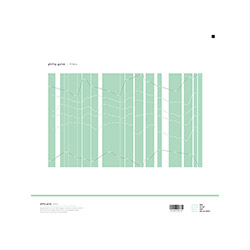
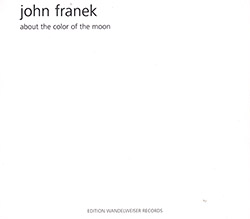

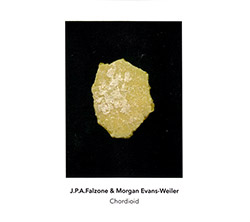
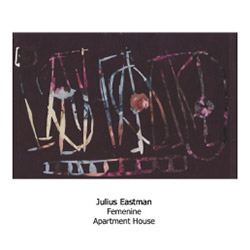
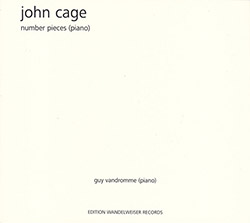
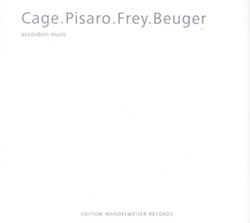

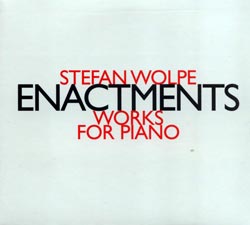



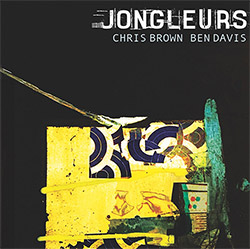
![BlueRing Improvisers: Materia [2 CDs]](https://www.teuthida.com/productImages/misc4/36513.jpg)




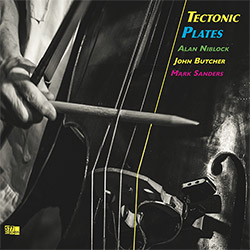


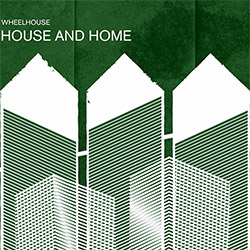
![Wheelhouse (Rempis / Adasiewicz / McBride): House And Home [VINYL]](https://www.teuthida.com/productImages/misc4/36462.jpg)
![+DOG+: The Light Of Our Lives [2 CDs]](https://www.teuthida.com/productImages/misc4/36009.jpg)


![Parker, Evan / Jean-Marc Foussat: Insolence [VINYL]](https://www.teuthida.com/productImages/misc4/36398.jpg)










![Deupree, Jerome / Sylvie Courvoisier / Lester St. Louis / Joe Morris: Canyon [2 CDs]](https://www.teuthida.com/productImages/misc4/36404.jpg)



![Eventless Plot | Haarvol: The Subliminal Paths [CASSETTE + DOWNLOAD]](https://www.teuthida.com/productImages/misc4/36232.jpg)










![Eventless Plot | Francesco Covarino: Methexis [CASSETTE + DOWNLOAD]](https://www.teuthida.com/productImages/misc4/36231.jpg)



![Das B (Mazen Kerbaj / Mike Majkowski / Magda Mayas / Tony Buck): Love [VINYL]](https://www.teuthida.com/productImages/misc4/36329.jpg)


![Eternities: Rides Again [CASSETTE]](https://www.teuthida.com/productImages/misc4/36247.jpg)
![Lopez, Francisco: Untitled (2021-2022) [2 CDs]](https://www.teuthida.com/productImages/misc4/36438.jpg)






![Money : Money 2 [2 CDs]](https://www.teuthida.com/productImages/misc4/35894.jpg)




![Klinga, Erik: Elusive Shimmer [VINYL]](https://www.teuthida.com/productImages/misc4/36258.jpg)
![CHANGES TO blind (Phil Zampino): Volume 9 - I Wave on a Fine Vile Mist [CD + DOWNLOAD]](https://www.teuthida.com/productImages/misc4/36061.jpg)

![Wallmart / Rubbish: Asset Protection [split CD]](https://www.teuthida.com/productImages/misc4/35900.jpg)


![+Dog+: The Family Music Book Vol. 5 [2 CDs]](https://www.teuthida.com/productImages/misc4/35897.jpg)
![Kuvveti, Deli : Kuslar Soyledi [CASSETTE w/ DOWNLOAD]](https://www.teuthida.com/productImages/misc4/36107.jpg)

![Brown, Dan / Dan Reynolds: Live At The Grange Hall [unauthorized][CASSETTE]](https://www.teuthida.com/productImages/misc4/36245.jpg)








![Palestine, Charlemagne / Seppe Gebruers: Beyondddddd The Notessssss [VINYL]](https://www.teuthida.com/productImages/misc4/36206.jpg)
![Palestine, Charlemagne / Seppe Gebruers: Beyondddddd The Notessssss [NEON GREEN VINYL]](https://www.teuthida.com/productImages/misc4/36207.jpg)

![Laubrock, Ingrid: Purposing The Air [2 CDs]](https://www.teuthida.com/productImages/misc4/35639.jpg)

![Yoko, Ono / The Great Learning Orchestra: Selected Recordings From Grapefruit [2 CDs]](https://www.teuthida.com/productImages/misc4/35841.jpg)









![Zorn, John / JACK Quartet: The Complete String Quartets [2 CDs]](https://www.teuthida.com/productImages/misc4/35609.jpg)

![Lonsdale, Eden: Dawnings [2 CDs]](https://www.teuthida.com/productImages/misc4/35480.jpg)



![Sorry For Laughing (G. Whitlow / M. Bates / Dave-Id / E. Ka-Spel): Rain Flowers [2 CDS]](https://www.teuthida.com/productImages/misc4/35985.jpg)

![Rolando, Tommaso / Andy Moor : Biscotti [CASSETTE w/ DOWNLOADS]](https://www.teuthida.com/productImages/misc4/36106.jpg)


![Electric Bird Noise / Derek Roddy: 8-10-22 [CD EP]](https://www.teuthida.com/productImages/misc4/35970.jpg)








![Elephant9 : Mythical River [VINYL]](https://www.teuthida.com/productImages/misc4/34624.jpg)



![Elephant9 with Terje Rypdal: Catching Fire [VINYL 2 LPs]](https://www.teuthida.com/productImages/misc4/35355.jpg)
![Deerlady (Obomsawin, Mali / Magdalena Abrego): Greatest Hits [VINYL]](https://www.teuthida.com/productImages/misc4/34876.jpg)







![Surplus 1980: Illusion of Consistency [CD]](https://www.teuthida.com/productImages/misc4/35069.jpg)
![Staiano, Moe: Away Towards the Light [VINYL + DOWNLOAD]](https://www.teuthida.com/productImages/misc4/35037.jpg)
![Coley, Byron: Dating Tips for Touring Bands [VINYL]](https://www.teuthida.com/productImages/misc4/17906.jpg)

![Lost Kisses: My Life is Sad & Funny [DVD]](https://www.teuthida.com/productImages/misc4/lostKissesDVD.jpg)